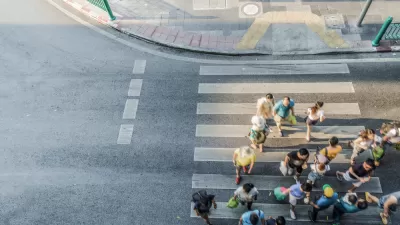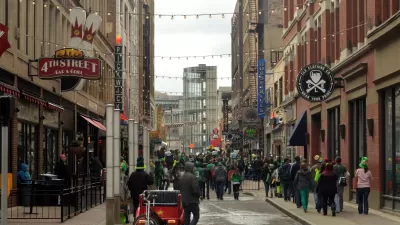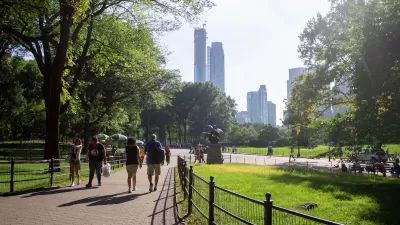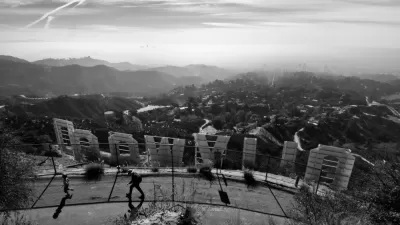Study finds people walk more in denser cities with more parks no matter what their country of origin.

Walkable cities really do get people walking. According to a cross sectional study of cities around the world found that, "The biggest design factors affecting the amount of 'moderate to vigorous intensity physical activity,' including walking, were: residential density, park and public transport density, and intersection density," writes Charlie Sorrel in an article for Fast Coexist.
The study, which was carried out in 14 cities sought to, "determine whether or not the cities' layouts themselves were the reason for increased health, as opposed to different lifestyles in different countries," Sorrel writes. The researches found that in cities as different as Baltimore and Bogota, "Dense, mixed-use city streets, with high walkability and ready access to good public transit: We've heard those criteria before. But this study is important because it shows that these factors lead to better public health independent of the economic status of the city or the cultural differences in different countries."
FULL STORY: The Well-Designed City Is A Healthy City, All Over The World

Planetizen Federal Action Tracker
A weekly monitor of how Trump’s orders and actions are impacting planners and planning in America.

Maui's Vacation Rental Debate Turns Ugly
Verbal attacks, misinformation campaigns and fistfights plague a high-stakes debate to convert thousands of vacation rentals into long-term housing.

San Francisco Suspends Traffic Calming Amidst Record Deaths
Citing “a challenging fiscal landscape,” the city will cease the program on the heels of 42 traffic deaths, including 24 pedestrians.

Defunct Pittsburgh Power Plant to Become Residential Tower
A decommissioned steam heat plant will be redeveloped into almost 100 affordable housing units.

Trump Prompts Restructuring of Transportation Research Board in “Unprecedented Overreach”
The TRB has eliminated more than half of its committees including those focused on climate, equity, and cities.

Amtrak Rolls Out New Orleans to Alabama “Mardi Gras” Train
The new service will operate morning and evening departures between Mobile and New Orleans.
Urban Design for Planners 1: Software Tools
This six-course series explores essential urban design concepts using open source software and equips planners with the tools they need to participate fully in the urban design process.
Planning for Universal Design
Learn the tools for implementing Universal Design in planning regulations.
Heyer Gruel & Associates PA
JM Goldson LLC
Custer County Colorado
City of Camden Redevelopment Agency
City of Astoria
Transportation Research & Education Center (TREC) at Portland State University
Jefferson Parish Government
Camden Redevelopment Agency
City of Claremont





























